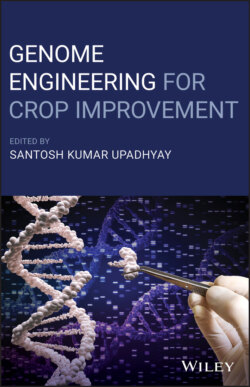Читать книгу Genome Engineering for Crop Improvement - Группа авторов - Страница 51
3.4.1.4 Maize
ОглавлениеMaize (Zea mays L.) is a widely grown C4 crop with a high rate of photosynthetic activity leading to high grain and biomass yield potential and most produced grain crop globally. The maize genome is genetically diploid and consists of 10 chromosomes with an estimate size ranging from 2.3 to 2.7 Gb (Schnable et al. 2009). The maize genome consists mostly of a non‐genic, repetitive fraction punctuated by islands of unique, or low‐copy DNA that harbor single genes or small groups of genes. The repetitive elements contribute significantly to the wide range of diversity within the species and include transposable elements, ribosomal DNA, and high‐copy short‐tandem repeats mostly present at the telomeres, centromeres, and heterochromatin knobs (Morgante 2006). It has been reported that approximately, 62 million tonnes maize was produced around the globe during the year 2019 (FAO (Food and Agriculture Organization of The United Nations) Statistics 2019–20). Its myriad end uses and the ease of cultivation over varied environmental and soil conditions has made it a desirable crop worldwide. In addition to human consumption, it is used as feed for livestock, raw materials for chemical and food industries and as biofuel (Pegoraro et al. 2011).
